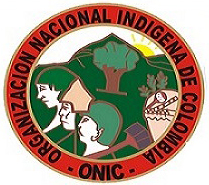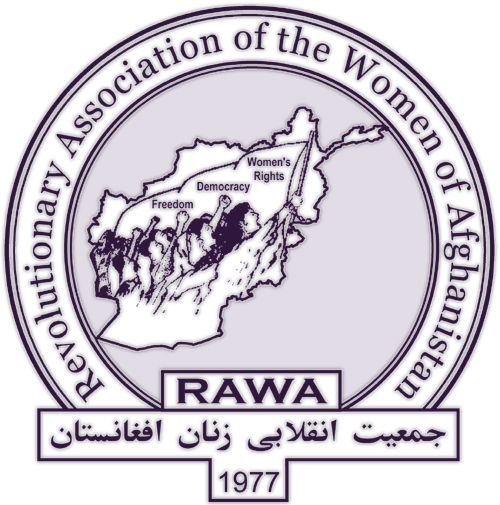informal mining
Colombia: top court deals blow to open-pit project
Colombia's Constitutional Court on Feb. 28 ruled that "prior consultation" with local Afro-descendent and indigenous communities must be carried out before an open-pit gold mine project can move ahead at Villonza, Marmato municipality, Caldas department. The ruling made reference to the indigenous community of Cartama and the Afro-Colombian community of Asojomar, both of which are largely sustained by small-scale artisanal mininng. Under a 2007 concession, Canada-based Gran Colombia Gold Corporation was to acquire these informal claims. In 2011, Father José Reinel Restrepo, the local parish priest, was murdered after returning from Bogotá, where he had registered his objection to the project with officials. Gran Colombia Gold is meanwhile is demanding Colombia pay $700 million under terms of the Canadian free trade agreement for failure to evict the artisanal miners. (TeleSur, Radio Caracol, March 2; El Tiempo, Feb. 28; Radio Caracol, Feb. 25)
FARC 'demobilization' —despite para terror
The "demobilization" of the FARC guerillas was declared complete this week, as the last 300 rebel fighters arrived at one of the transition camps in Cauca. In what was called the "FARC's last march,' an estimated 6,900 arrived by foot, boat or bus at the 26 Veredal Zones of Transition to Normalization (ZVTN) in rural areas of the country. The demobilization has seen scattered incidents of violence, including a Feb. 21 shoot-out between guerilla fighters that left two injured at a sporting match in the ZVTN at Buenos Aires, Cauca. The FARC carried out the demobilization under protest, charging that the government was failing to live up to commitments, including providing sufficient aid to the ZVTNs and restraining right-wing paramilitary groups. (El Espectador, Feb. 21; BBC News, Feb. 19; El Espectador, Jan. 30)
FARC narco-factions refuse to lay down arms
The historic peace process in Colombia is finally resulting in demobilization of the country's FARC guerilla fighters, who are now gathering at designated points in the countryside to turn over their arms. The effort has won President Juan Manuel Santos a Nobel Peace Prize. But FARC leaders admit that five regional commanders—said to be those most co-opted by the narco trade—are refusing to lay down arms, and have been officially expelled by the guerilla army's high command. According to a FARC communique extensively quoted in Bogotá daily El Tiempo Dec. 13, one of the renegade guerilla leaders is "Gentil Duarte," who before his expulsion was a member of the FARC high command. Also named is "Jhon 40," the notorious commander of a jungle zone along the Venezuelan border, a key transfer point for cocaine and other contraband. He is also believed to profit off of illegal mining operations in the zone.
Indonesian court rejects bid to save Aceh forest
In a blow to rainforest conservation in Sumatra, an Indonesian court on Nov. 29 dismissed a class-action lawsuit seeking to force the Aceh provincial government to protect the threatened Leuser Ecosystem in its land-use plan. The Central Jakarta District Court found that the provincial bylaw permitting mining within the Ecosystem caused no material losses to the plaintiffs—despite the fact that the Ecosystem is protected under national law as a "national strategic area." Five million people rely for clean water on Leuser’s forests, which also protect against natural disasters. Deforestation in Aceh's Tamiang district, for example, caused flash floods that displaced tens of thousands of people in 2006.
Peru: dramatic rainforest loss from mining
Gold mining in Peru has razed almost 62,500 hectares of rainforest —an area over ten times the size of Manhattan—between October 2012 and October 2016, according to a new report by the Monitoring of the Andean Amazon Project (MAAP). While the tendrils of gold mining are spreading across the country, the region of Madre de Dios still accounts for the vast majority of mining-related deforestation to date, MAAP researchers write.
Frog die-off ominous sign for Lake Titicaca
Peru's National Forestry and Wildlife Service (SERFOR) is investigating the death of some 10,000 frogs whose bodies have been found in the Río Coata, which flows into Lake Titicaca. The alert was sounded by the local Committee Against the Pollution of the Río Coata, which accused the authorities of ignoring the river's severe pollution. Activists brought 100 of the dead frogs to the central square in the regional capital, Puno. Said protest leader Maruja Inquilla: "I've had to bring them the dead frogs. The authorities don't realize how we're living. They have no idea how major the pollution is. The situation is maddening." The committee has long been petitioning for construction of a sewage treatment plant for the river, and also for bringing informal minig camps up the river under control. Last year, arsenic, presumably from unregulated gold-mining in the area, was found to have contaminated several wells in the Coata watershed. The Puno regional health department conducted the study following a campaign by local campesino communities.
Peru: satellite to monitor rainforest
Peru launched its first satellite into space this month, to monitor illegal mining, logging and other extractive activities in the country's vast stretch of the Amazon rainforest. The Peru SAT-1, developed with French aid and the most sophisticated in Latin America, was launched Sept. 15 from Kourou Spaceport in French Guiana and monitored from the Satellite Images National Operations Center (CNOIS) in Pucusana, south of Lima. The satellite bears the logo of Peru's space agency, CONIDA, with the words "Kausachun Peru" (Viva Peru in Quechua). (Peru This Week, Nature, Sept. 15)
Bolivia: vice-minister killed by protesting miners
A deputy interior minister in Bolivia's government was abducted and killed by striking miners Aug. 25 in a conflict over formalization of mineral claims on the Altiplano. Rodolfo Illanes had gone to Panduro , a town some 80 miles south of La Paz, to open a dialogue with the miners, who had been blockading a highway for the past three days. The protest had turned violent, with two miners killed by riot police. Interior Minister Carlos Romero said "all indications" were that Illanes had been murdered in a "cowardly and brutal" attack. Defense Minister Reymi Ferreira broke down on television as he described how Illanes, appointed to his post in March, had apparently been "beaten and tortured to death." The National Federation of Mining Cooperatives (FENCOMIN), which called the strike, has not yet issued a statement.















Recent Updates
13 hours 56 min ago
1 day 12 hours ago
1 day 18 hours ago
1 day 21 hours ago
3 days 15 hours ago
3 days 17 hours ago
4 days 21 hours ago
4 days 21 hours ago
4 days 22 hours ago
6 days 13 hours ago